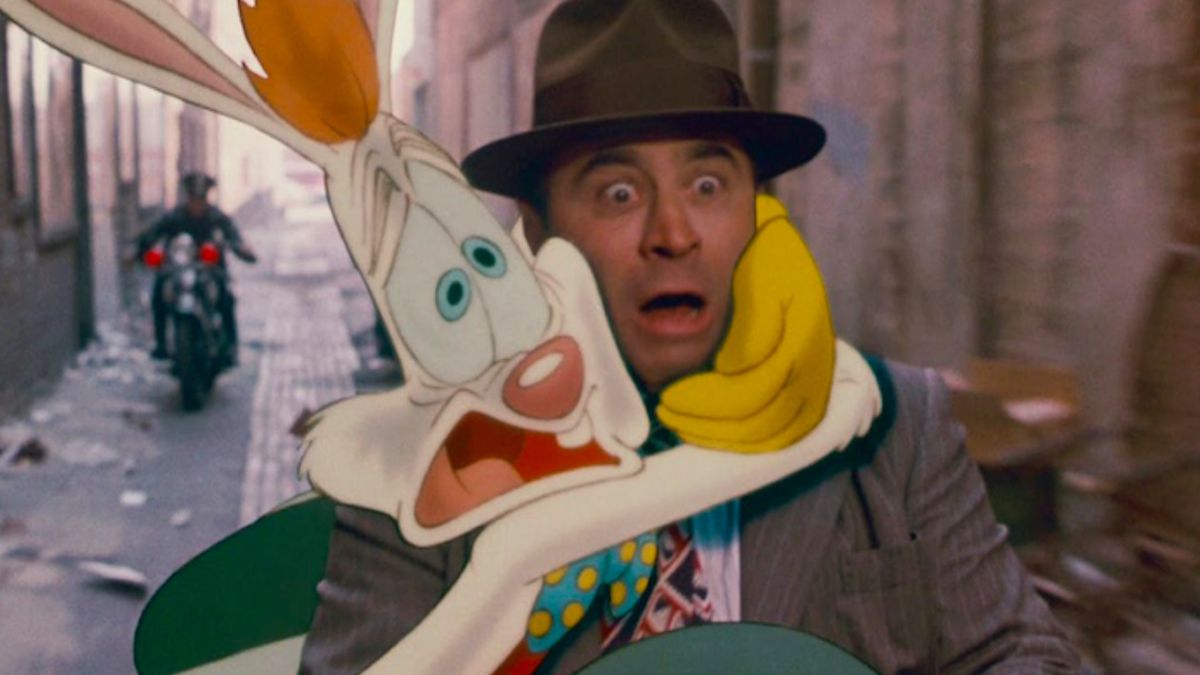The best kids movies appeal to both older and younger audiences, assuring an enjoyable experience for the whole family. However, to achieve this, sometimes Hollywood incorporates certain jokes, themes, or even entire plot lines that are not appealing to kids at all and might leave them speaking with a colorful new vocabulary, making jokes way above their age level, or even traumatized for life. The following are a few examples of some notable, beloved children’s movies that, looking back, we might have been too young for.
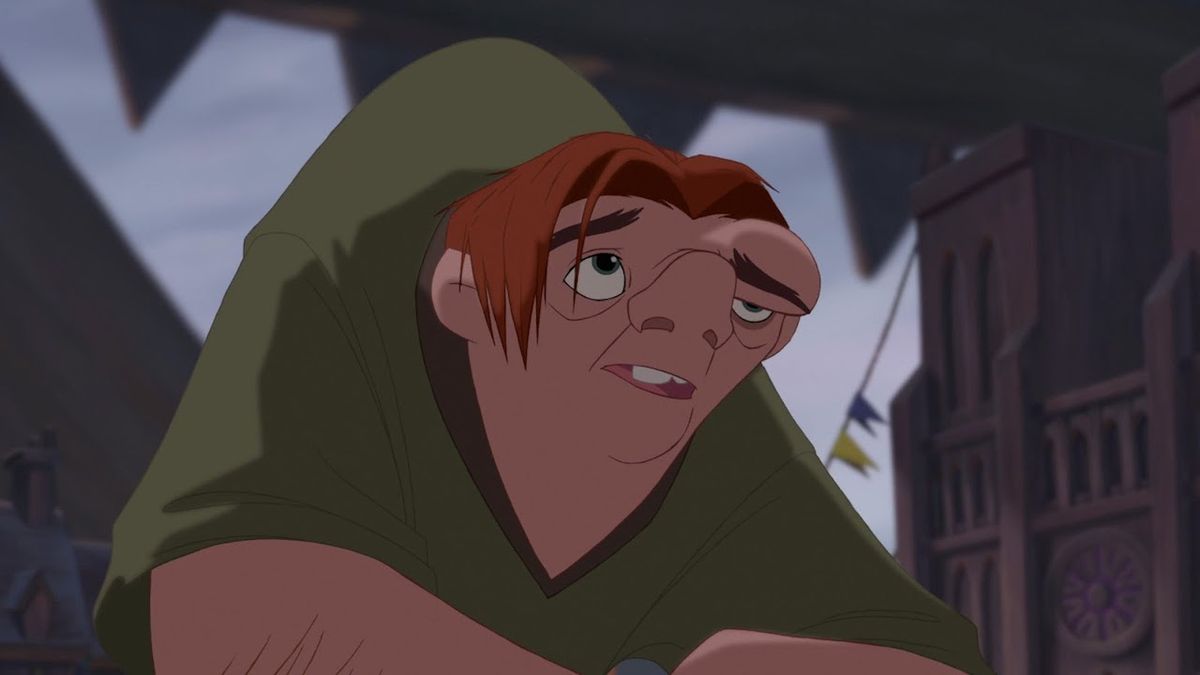
The Hunchback Of Notre Dame (1996)
Had it existed back then, The Hunchback of Notre Dame could have won the Best Animated Feature Oscar for being a very compelling period drama set in 15th-Century Paris. However, the story of the Disney classic — based on Victor Hugo’s dark novel involving an anomalous man nearly killed as an infant and an elderly priest (reimagined as a judge in the film) uncomfortably and passionately obsessed with a young dancer — is not particularly ideal for children’s entertainment at its core.
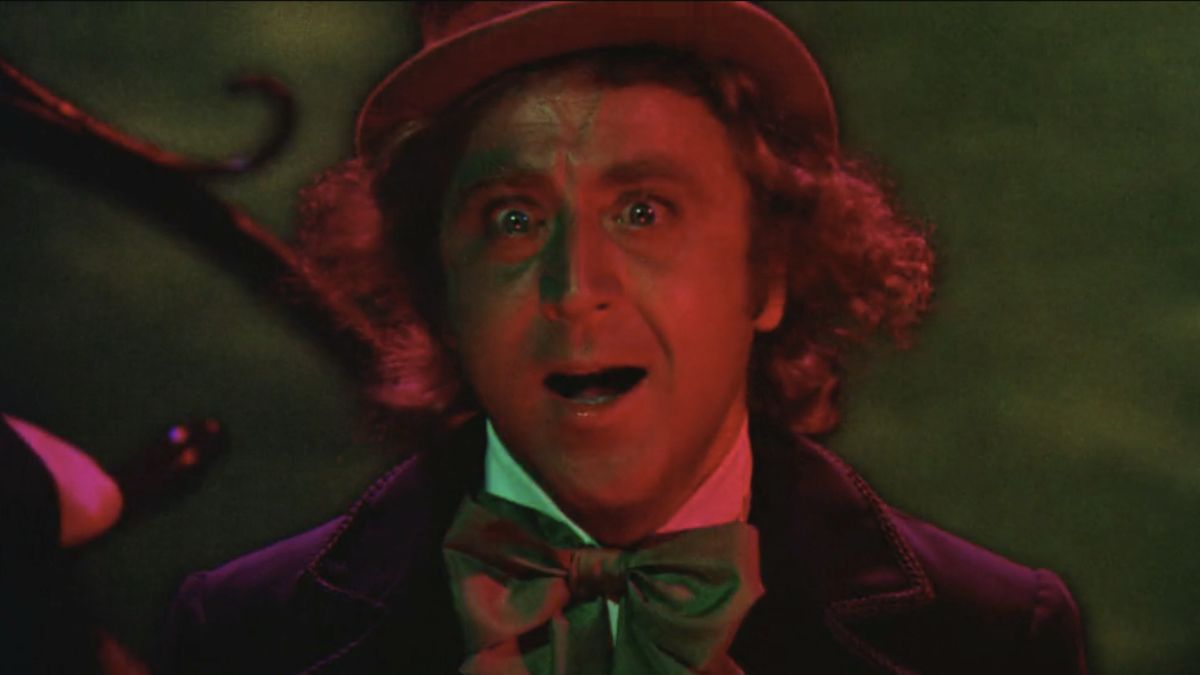
Willy Wonka And The Chocolate Factory (1971)
For years, fans have been re-analyzing Willy Wonka and the Chocolate Factory and coming up with wild fan theories to darken the scrumdiddlyumptious classic, but why bother? The film’s dark themes are spelled out for us pretty clearly, especially in the infamous tunnel sequence when the titular chocolatier (played by Gene Wilder) recites a foreboding poem as unsettling images appear around the boat full of passengers.
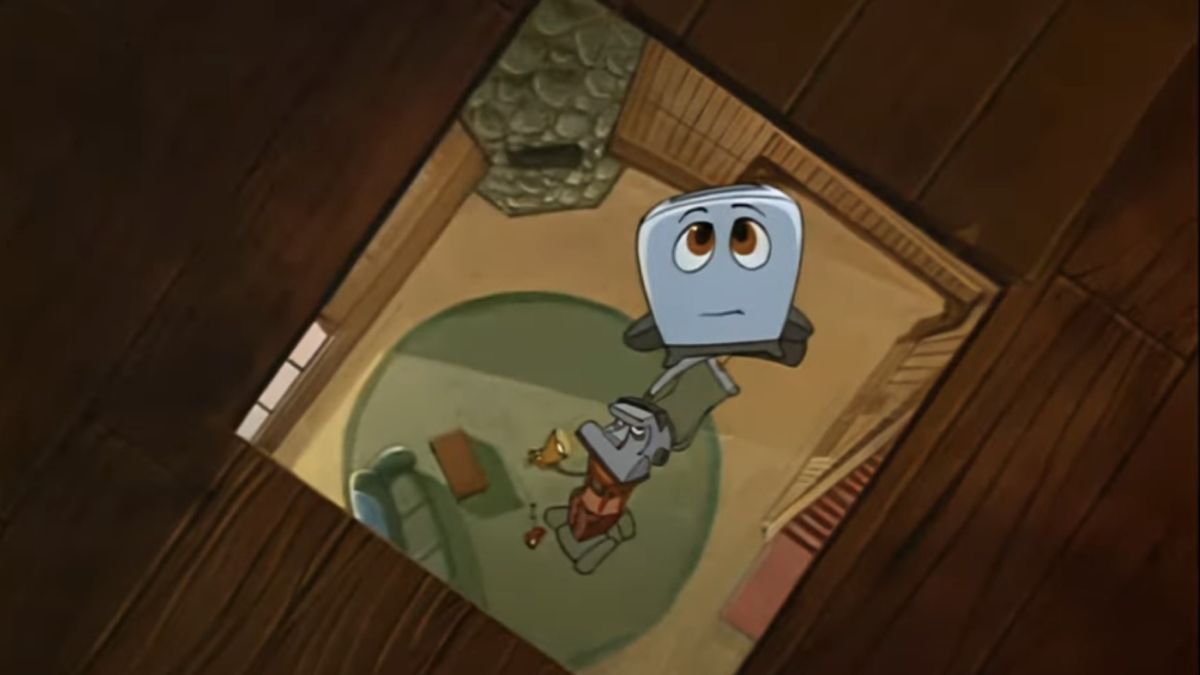
The Brave Little Toaster (1987)
Before there was Toy Story, the ultimate animated adventure about sentient inanimate objects was The Brave Little Toaster, in which a group of old appliances set out to find their “master” after being left at a woodland cabin. The great thing about this classic is that it teaches children to be more compassionate and sentimental, but it does so through very upsetting means, depicting the cruel treatment of our innocent protagonists.
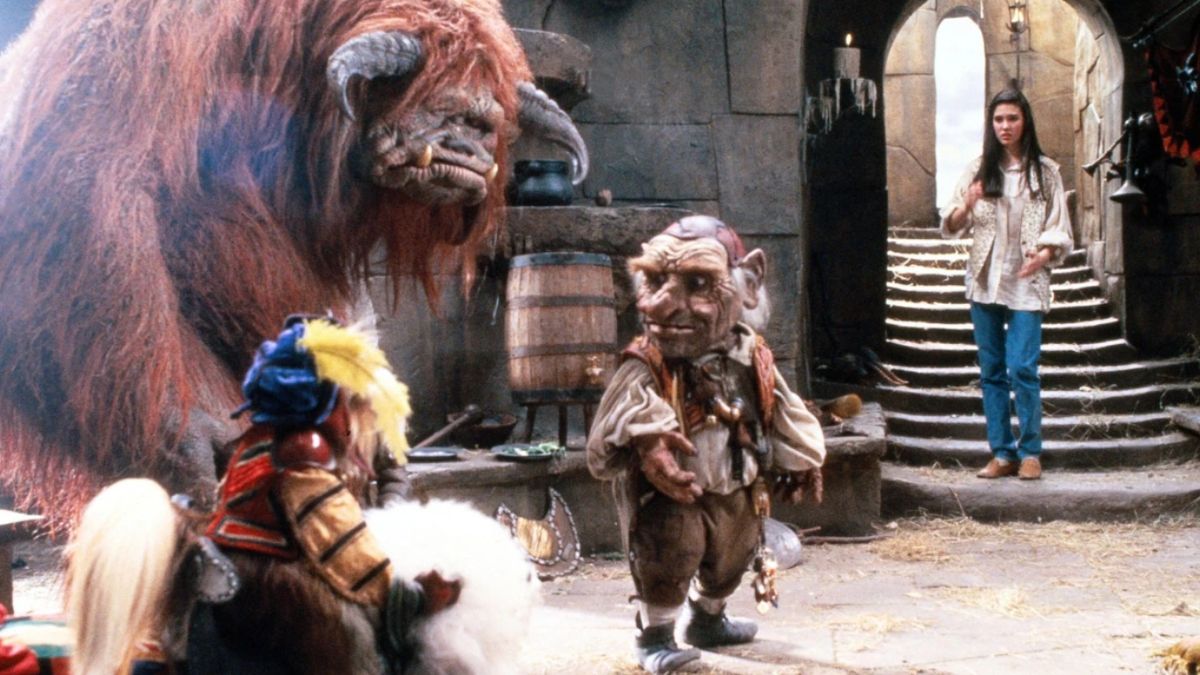
Labyrinth (1986)
Director Jim Henson’s cult favorite fantasy, Labyrinth, is already pretty dark with its creepy puppetry and plot involving a kidnapped infant. However, it is the predatory undertones of David Bowie‘s character, Goblin King Jareth, when interacting with Jennifer Conolly’s young protagonist, Sarah, that really makes it hard to recommend to anyone under 13.
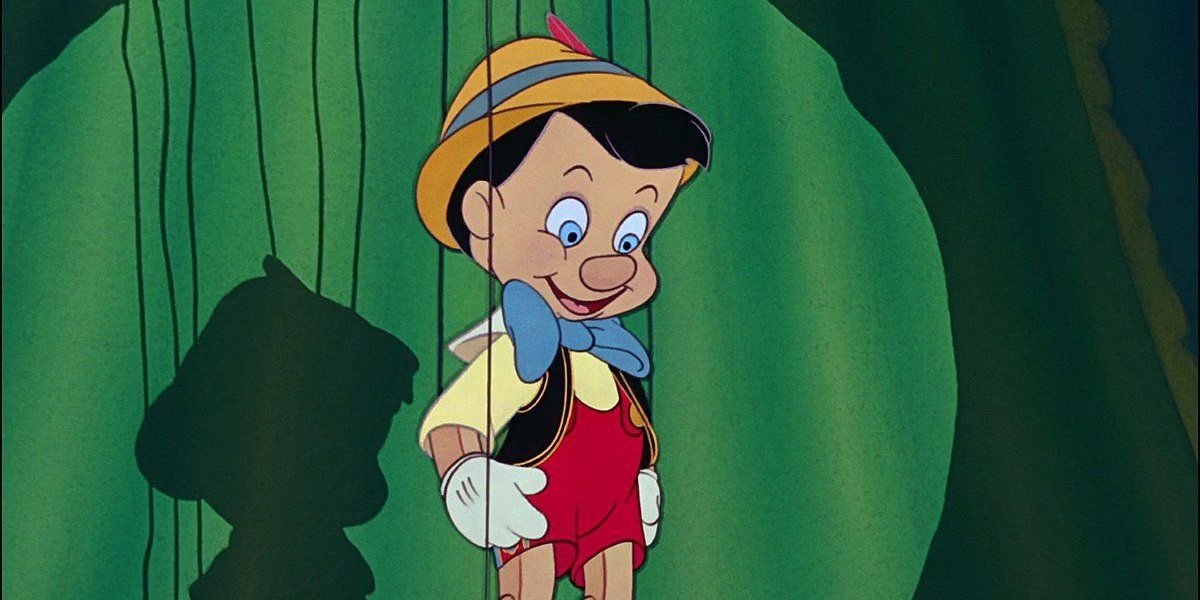
Pinocchio (1940)
Because most fairy tales are also cautionary tales, the sight of Pinocchio smoking a cigar after running away to Pleasure Island does not bother us too much. It is the way the titular, enchanted puppet from the Disney classic learns his lesson — seeing other runaway children transformed into donkeys — that leaves us wondering if this story takes its teachable moment a little too far.

One Hundred And One Dalmatians (1961)
Watching dogs save the day in One Hundred and One Dalmatians is what makes the animated film such a rewarding and joyful experience. However, when you consider the fact that these Dalmatians are forced to spring into action because Cruella de Vil wants to skin the spotted puppies for her own fur coat, it makes one hesitant to show it to any younger canine lovers.
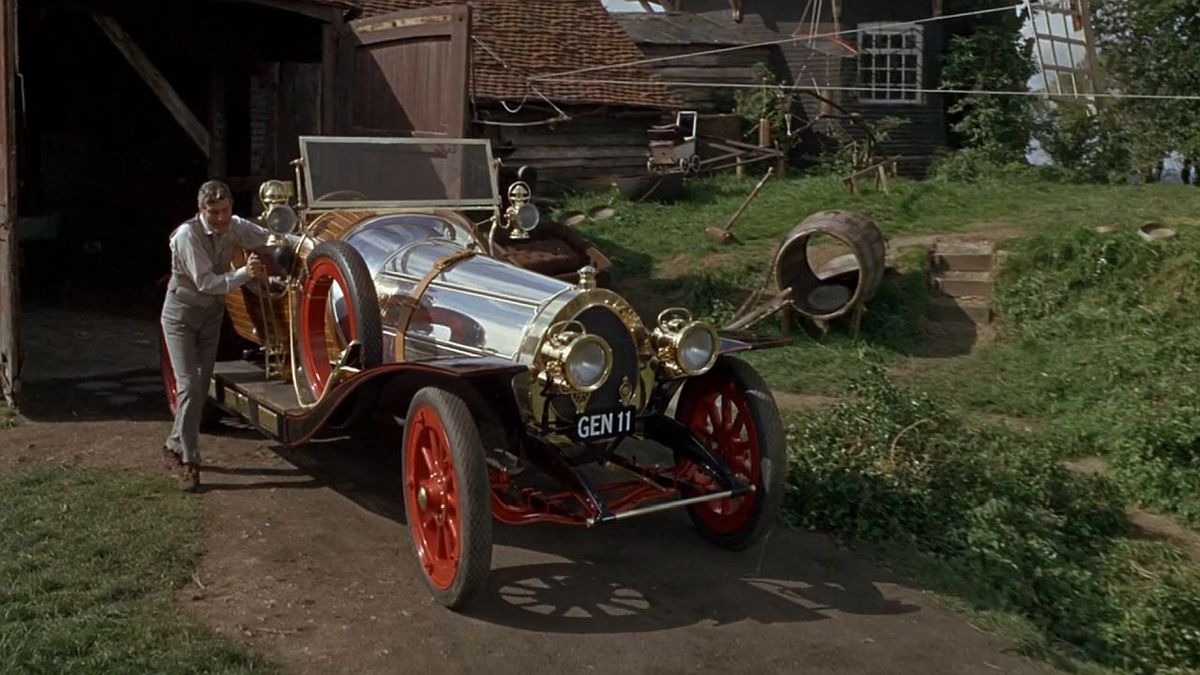
Chitty Chitty Bang Bang (1968)
It would be childish of us to think that this musical adaptation of Ian Fleming’s children’s novel, Chitty Chitty Bang Bang, is inappropriate because of the title alone. Our concern is the fact that it takes place in a land called “Vulgaria” and one of its extremely discomforting main villains is literally referred to as the “Child Catcher.”
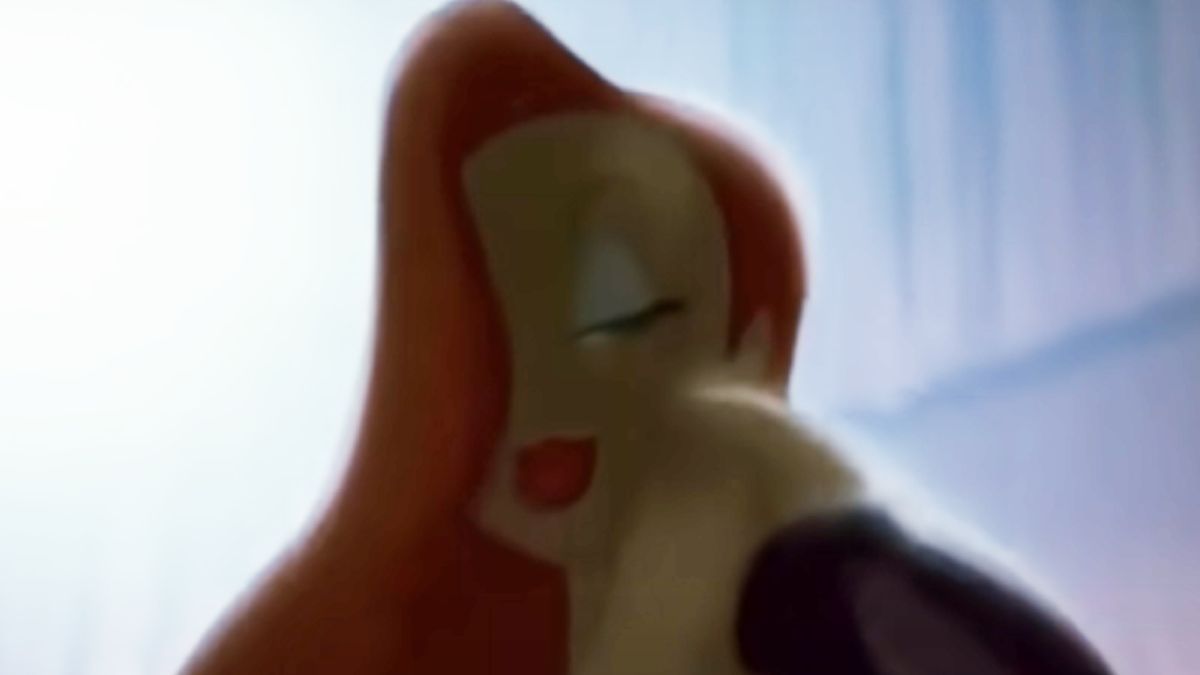
Who Framed Roger Rabbit (1988)
There is an argument to be made that Who Framed Roger Rabbit was never even intended for children in the first place and only earned its PG rating because they were more common at the time, let alone the fact that many of the characters are animated. Even then, this murder mystery story featuring a cigar-smoking baby with racy dialogue, a hard-drinking protagonist, and a sultry femme fatale (Kathleen Turner’s Jessica Rabbit) would have never been PG in this day and age.
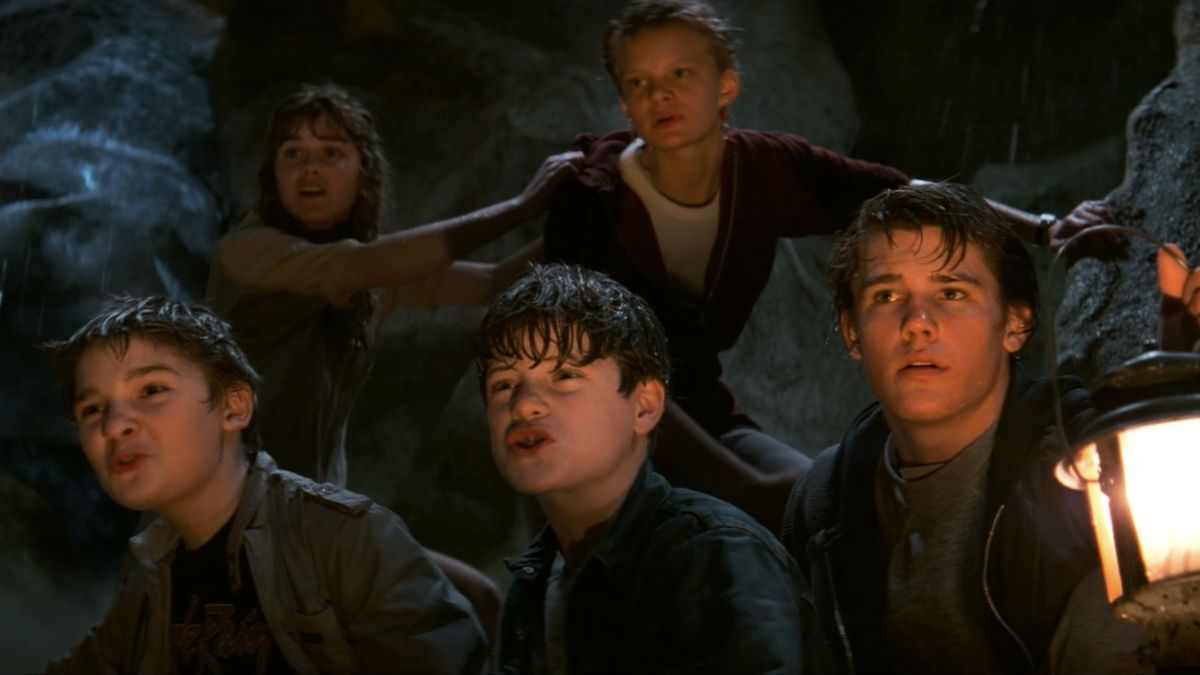
The Goonies (1985)
Director Richard Donner and producer Steven Spielberg’s enduring cult favorite, The Goonies, offer a relatively accurate depiction of what might happen if a group of children tried to live out their adventurous fantasies for real. The result includes a great deal of swearing, violence, innuendoes, and constant peril that younger viewers should find distressing.
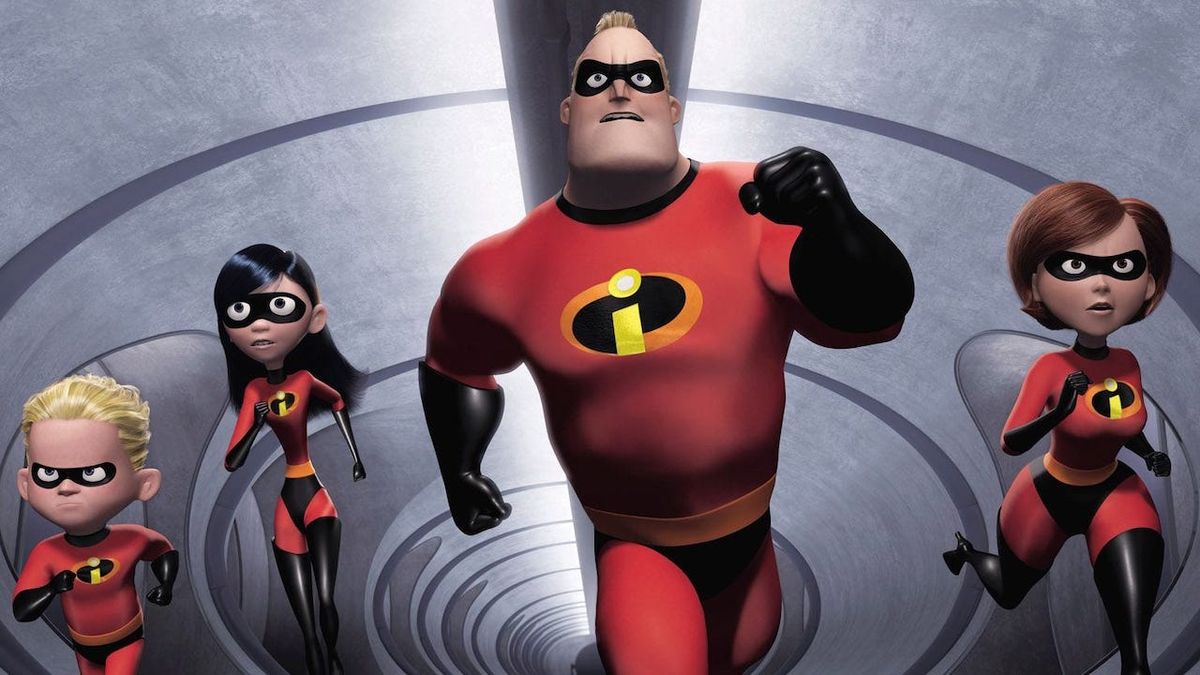
The Incredibles (2004)
Because it is an animated Disney property and one of Pixar’s best films, we often forget that Brad Bird’s The Incredibles is one of the darkest superhero movies of its time. If the action thriller was not animated, its violence (which involves children) and other various adult elements would have surely cost it its PG rating.
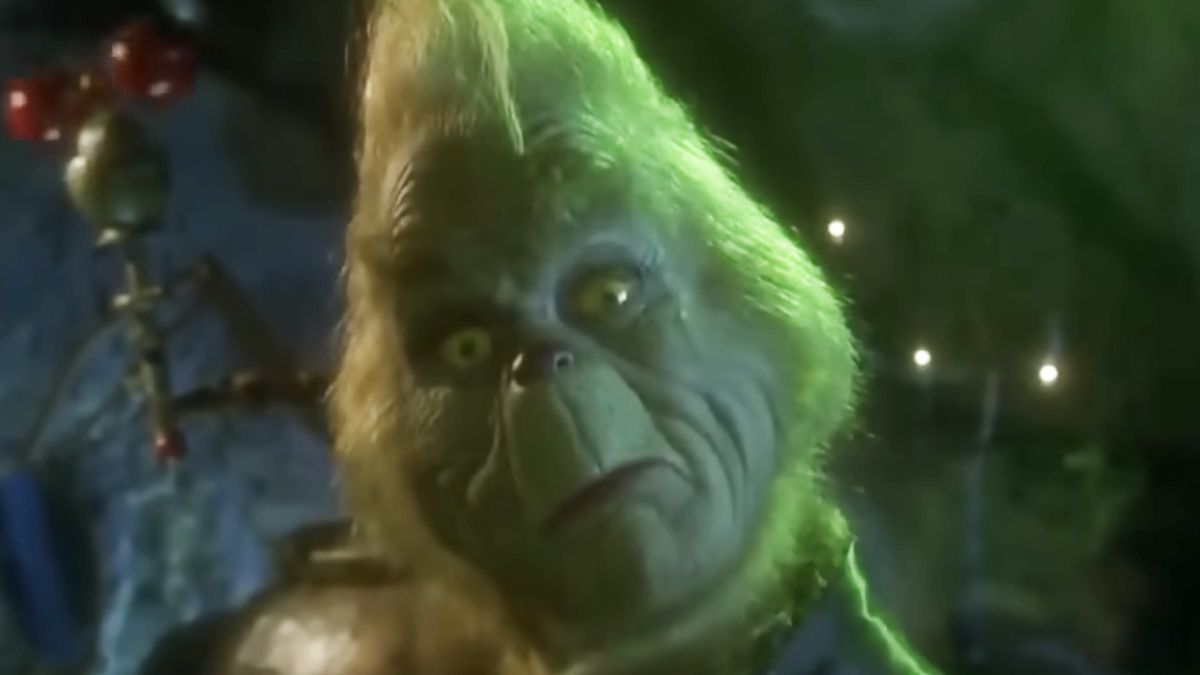
How The Grinch Stole Christmas (2000)
Ron Howard’s big-screen attempt at adapting a Dr. Seuss book into a live-action feature, How the Grinch Stole Christmas, has quite a bit of crude humor and a certain mean-spirited tone that the author is certainly not known for. One particular moment that surely went over younger viewers’ heads is the scene when the infant Grinch (played as an adult by Jim Carrey) lands at the home of his adoptive mothers, where they are clearly throwing a swingers’ party.
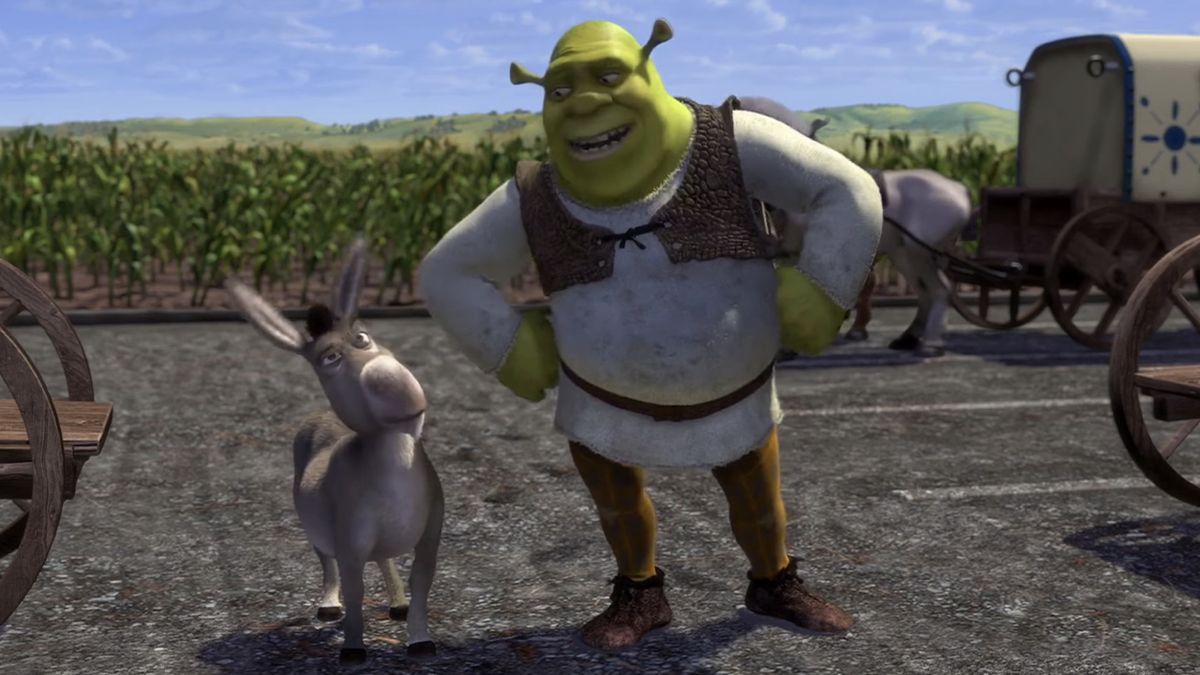
The Shrek Movies (2001-2010)
Watching all the Shrek movies is an almost entirely different experience for grown-ups than it is for children with mature jokes and references throughout. For instance, the first installment features Shrek’s (Mike Myers) comment about Lord Farquaad “compensating for something” with his large castle or a fairy tale-style recreation of O.J. Simpson’s low-speed chase in 2004’s Shrek 2.
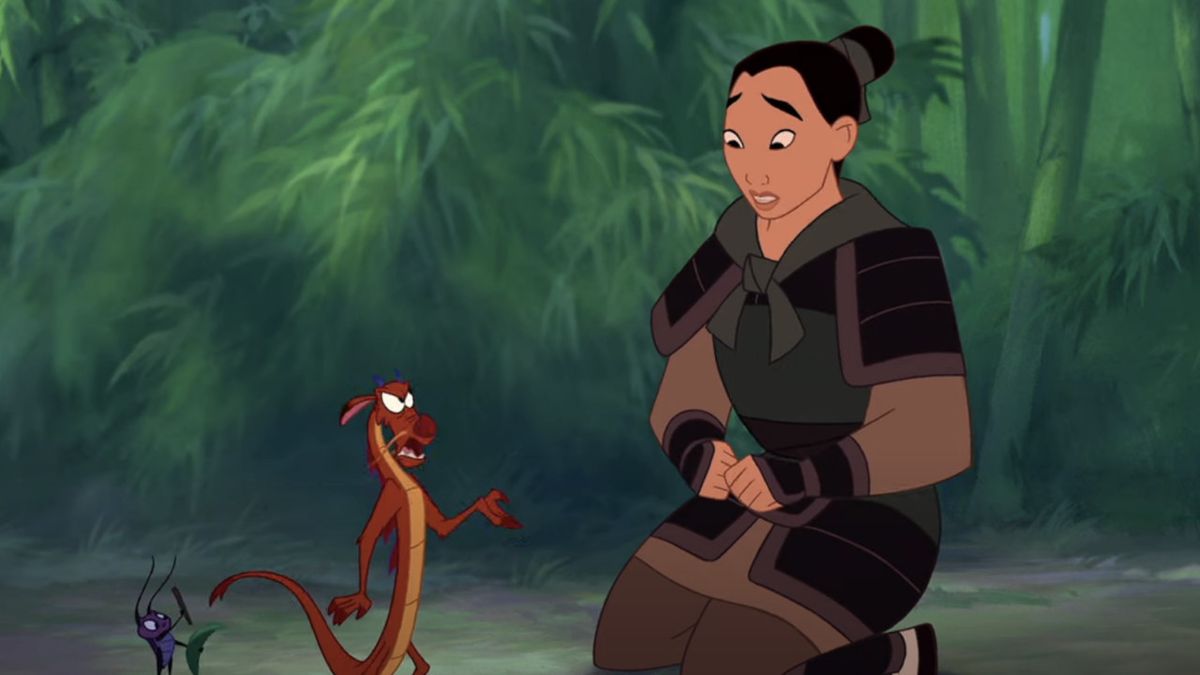
Mulan (1998)
As a film that takes place during a war, violence is to be expected, but is also handled in an impressively tame manner in Mulan. However, what people often tend to forget is how much partial nudity is in this animated Disney classic, particularly when the titular hero (voiced by Ming-Na Wen), posing as a man, is bathing in a lake and his suddenly joined by her fellow, male soldiers.
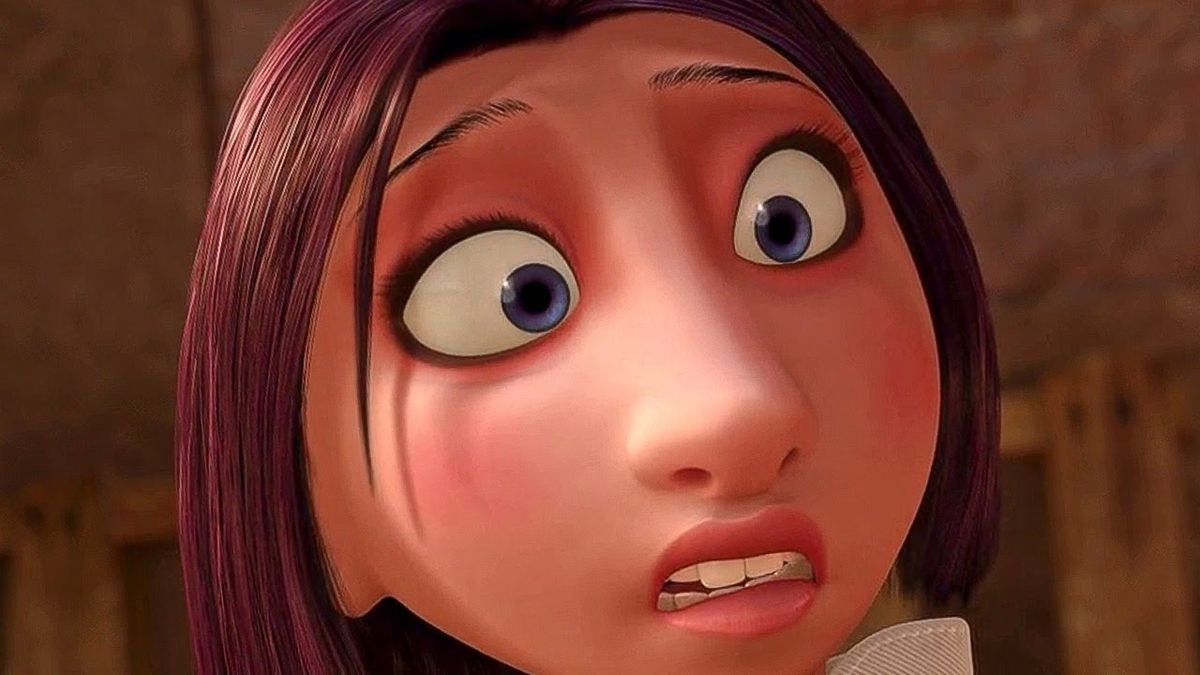
Ratatouille (2007)
Brad Bird’s Ratatouille is a delicious family treat, but not without its indulgences in adult humor. One notable scene from Pixar’s culinary comedy sees Alfredo Linguini (Lou Romano) begin to confess about Remy (Patton Oswalt) to Colette (Janeane Garofalo), he begins by saying, “I have a tiny, little…,” at which point she darts her eyes below his belt.
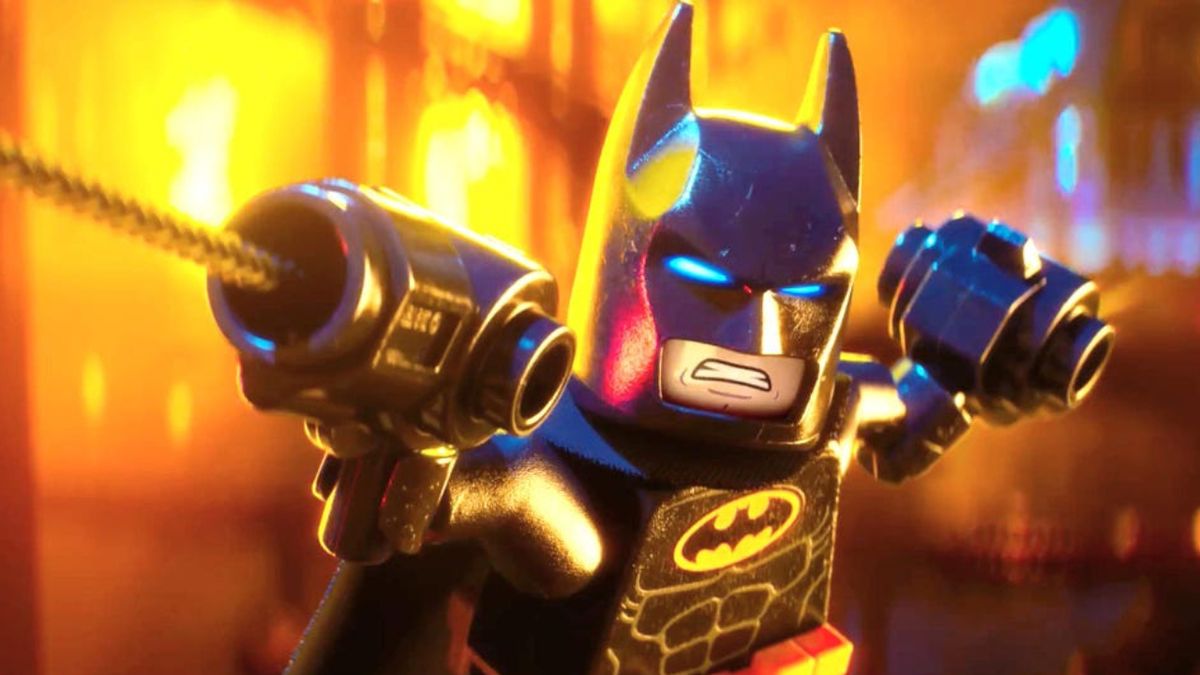
The LEGO Batman Movie (2017)
Honestly, we believe that one of the things that makes The LEGO Batman Movie just as good as any live-action Batman movie is its more mature, but very clever, jokes. For instance, when Bruce Wayne (Will Arnett) first meets the young man who will be his ward and sidekick, the boy (voiced by Michael Cera) says his name is Richard Grayson, but most people call him “Dick,” to which the aristocrat replies, “Well, children can be cruel.”
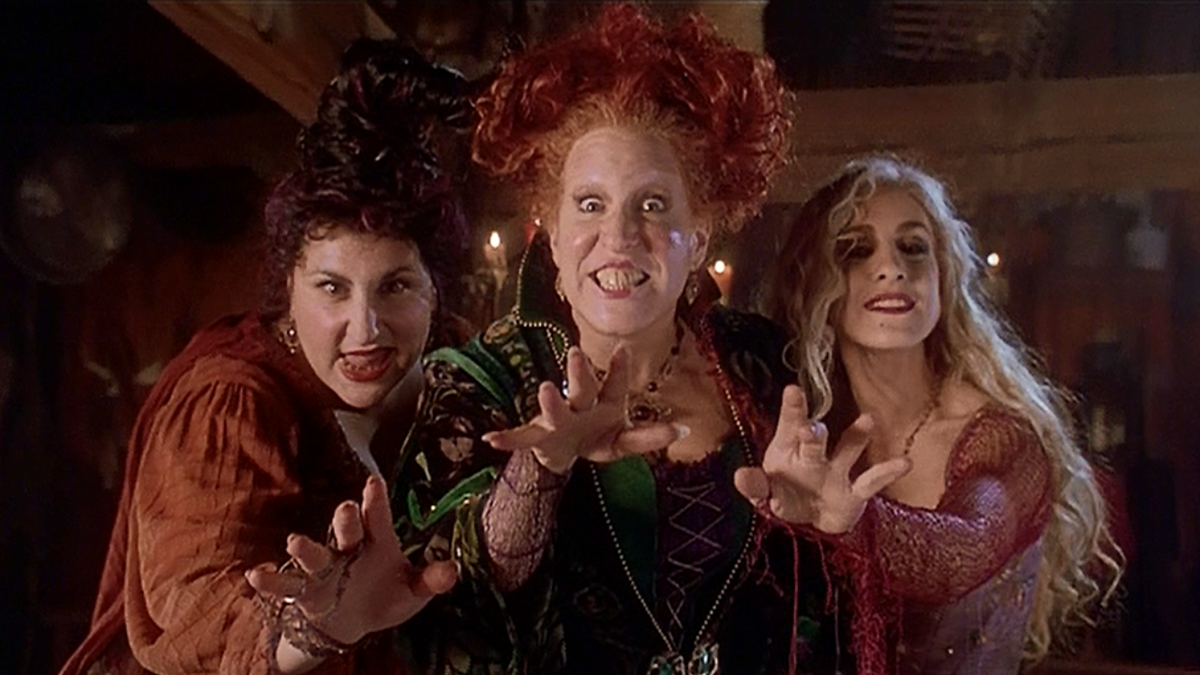
Hocus Pocus (1993)
While certainly one of the more lighthearted movies about witches ever made, because of wall-to-wall innuendos and themes of child murder, calling Hocus Pocus a family movie is a bit of a stretch. Constant mentions of Max Dennison’s (Omri Katz) innocence (the reason why the Black Flame Candle successfully brings back the Sanderson Sisters) and a suggestive exchange between the witches and a bus driver are just a few notable examples.
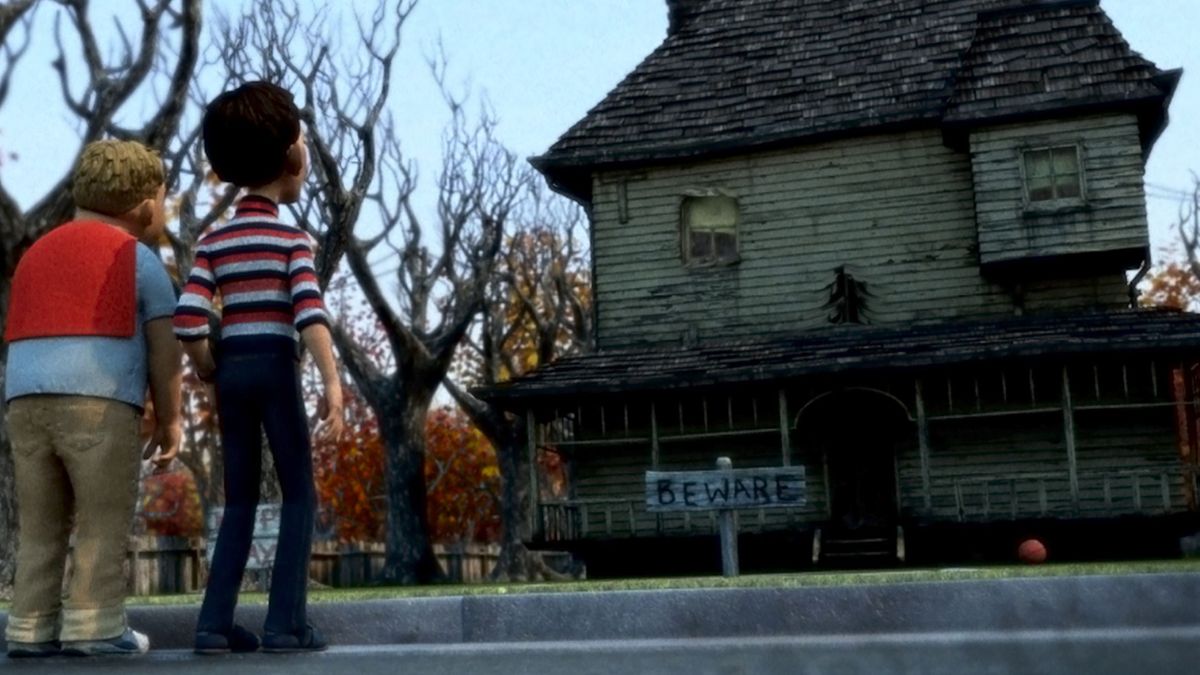
Monster House (2006)
With a title like Monster House, you’d assume children should not be admitted anyway, but the horror elements are not really anything to be concerned by. However, the not-so-scary favorite does include moments of underage drinking, a reference to Chowder’s mother’s potential infidelity with her “personal trainer,” and Chowder asking if they are in a “girl house” after Jenny calls a chandelier its “uvula.”

Bee Movie (2007)
We suppose we should have realized that an animated movie co-written by and starring Jerry Seinfeld was not going to be just for the children. However, who could have expected that Seinfeld’s Bee Movie character — an insect named Barry B. Barrington — would have a crush on a human named Vanessa (Renée Zellweger) and that this strange interspecies romance would be expressed through many bizarre innuendoes?
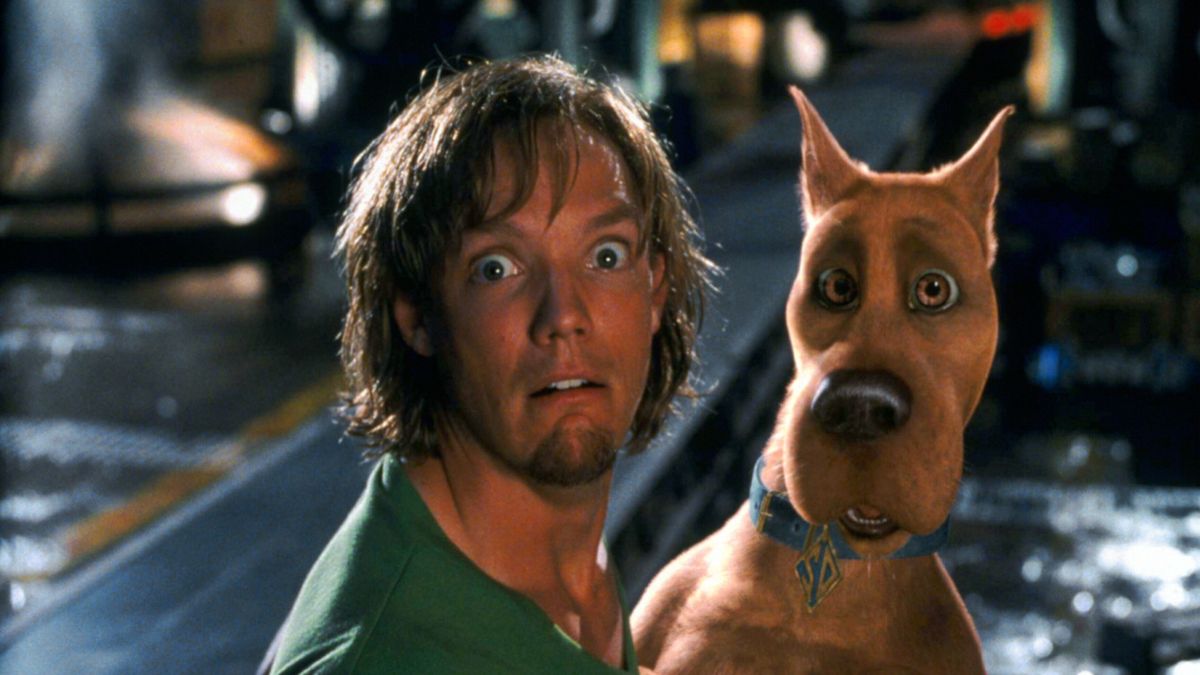
Scooby-Doo (2002)
Writer James Gunn has said there exists an R-rated cut of Scooby-Doo — the live-action adaptation of the classic cartoon — and signs of that can be found throughout. Among them is the moment when Shaggy (Matthew Lillard) tells Mary-Jane (Isla Fisher) that she has his “favorite name” and when Freddy (Freddie Prinze Jr.), accidentally inhabiting Daphne’s (Sarah Michelle Gellar) body, relishes in the ability to look at himself without clothing.

The Road To El Dorado (2000)
The influence of Bob Hope, Bing Crosby, and Dorothy Lamour’s Road to… franchise in DreamWorks’ The Road to El Dorado is clear, right down to the off-beat and often suggestive humor. The most significant and often debated example from the animated film is when Chel (Rosie Perez) seduces Tulio (Kevin Kline), leading to a love scene that is offscreen, but easily heard.

Tarzan (1999)
It is pretty surprising when you remember that Disney’s animated version of Edgar Rice Burroughs’ Tarzan is rated G as the violence is actually quite visceral. It is even more disturbing when it is subtle, such as in Clayton’s death scene, when the silhouette of him being hung by the neck with vines can be spotted.
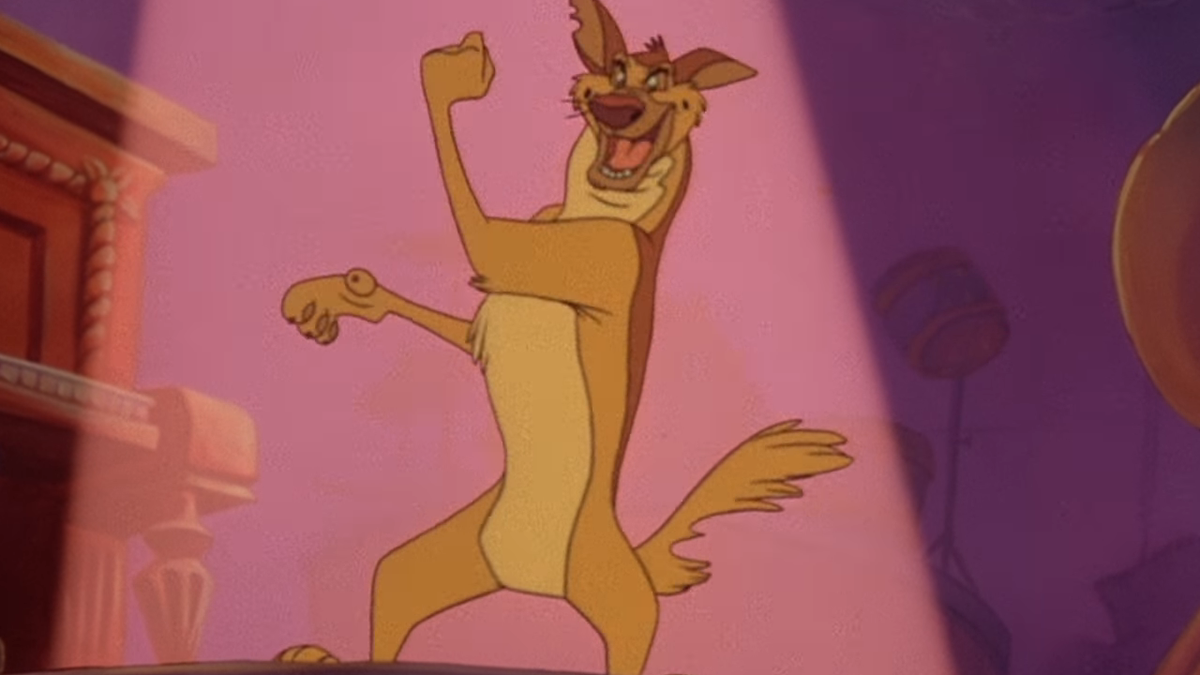
All Dogs Go To Heaven (1989)
The movie may be called All Dogs Go to Heaven, but there is one scene when Charlie (voiced by Burt Reynolds) visits the opposite end of the afterlife. That is only one pivotal, disturbing moment from the fantasy classic by animation legend Don Bluth, whose entire filmography has its fair share of nightmare fuel.
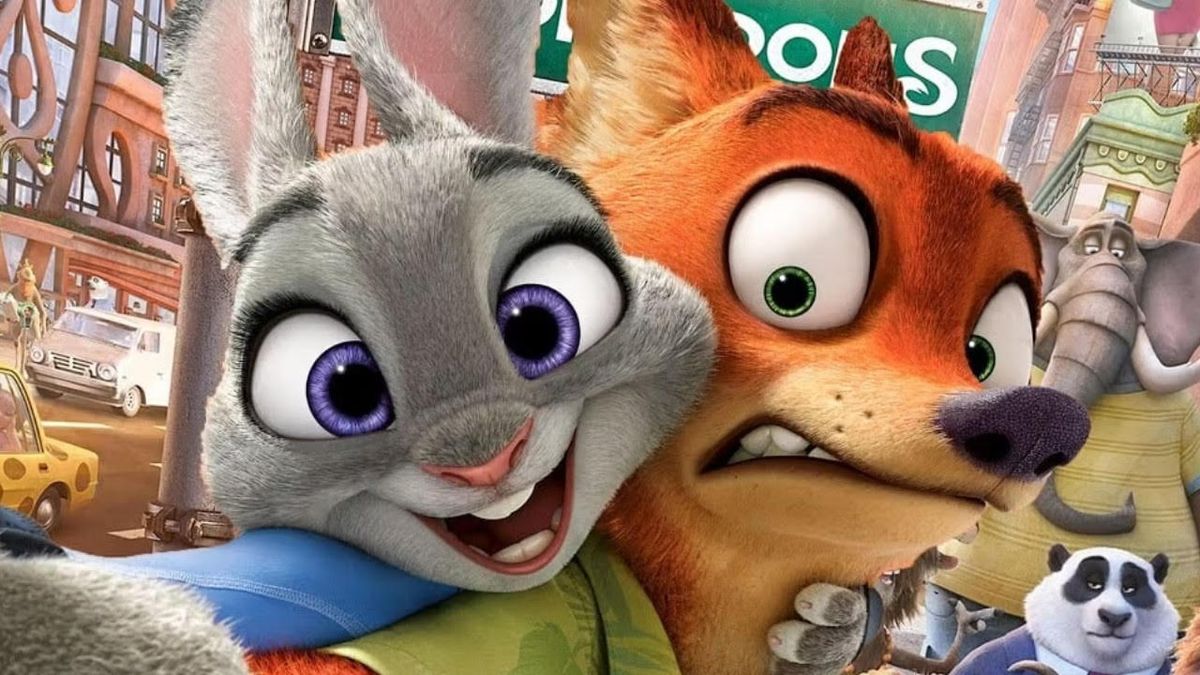
Zootopia (2016)
There is a pretty funny and cleverly subtle adult joke from Zootopia that both kids and grown-ups may have missed. At one point, Judy (voiced by Ginnifer Goodwin) says, “I am just a dumb bunny, but we are good at multiplying.”
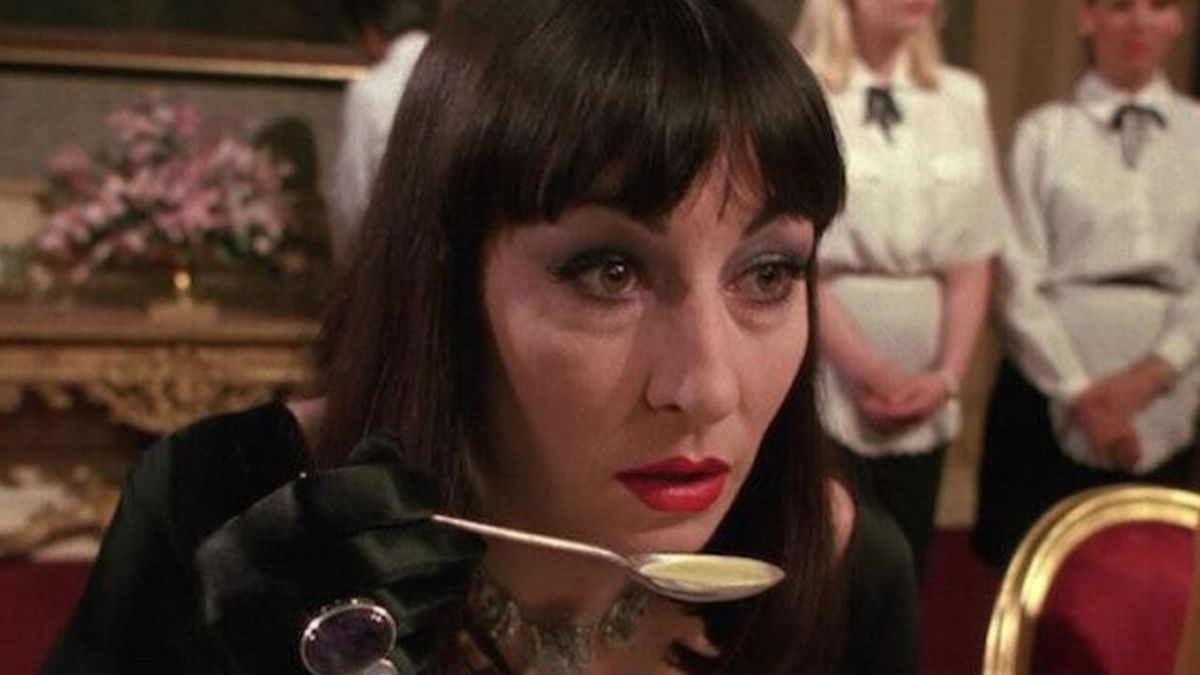
The Witches (1990)
One of the most sinister and truly grotesque depictions of witches — especially Anjelica Huston’s Eva Ernst — comes from a film intended as a “family picture.” Roald Dahl himself even agreed that director Nicolas Roeg’s adaptation of his 1983 novel, The Witches, was a little too scary for his taste.

Antz (1998)
DreamWorks’ Antz is often considered the unintentional twin of Pixar’s A Bugs Life, but the latter is far different, especially in terms of its genuine appeal to younger audiences. If it were not an animated film about insects, its innuendos, swearing, and plot involving a genocidal conspiracy would have easily earned it a PG-13 rating, at least.
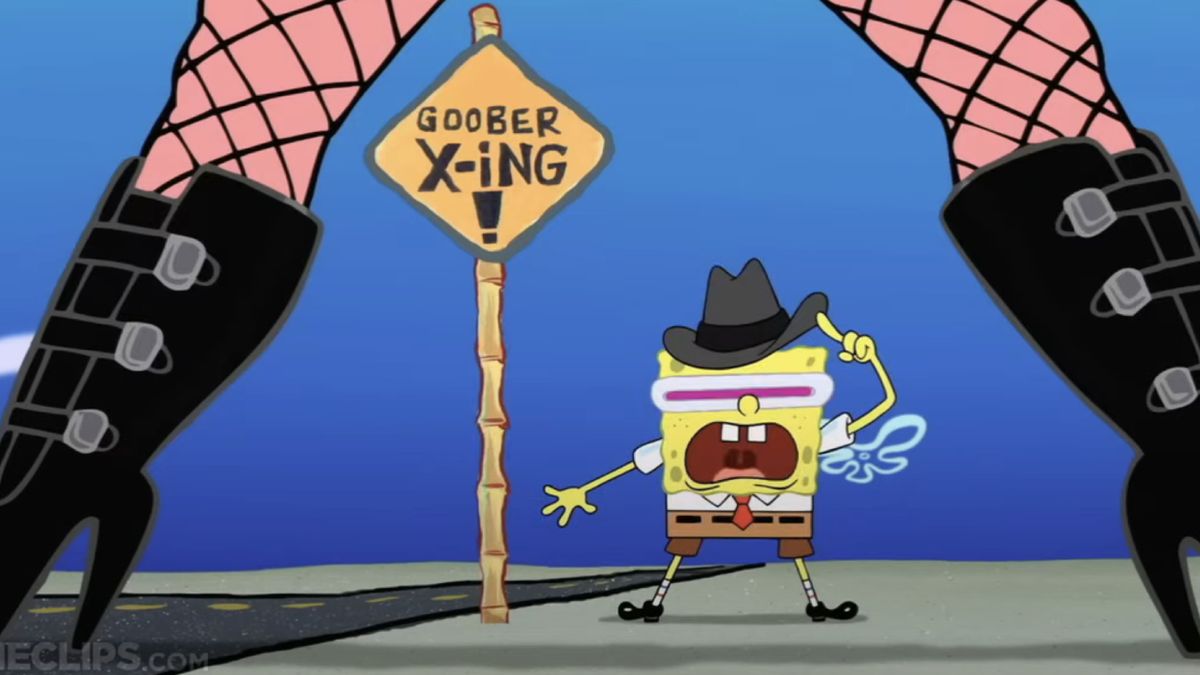
The SpongeBob Squarepants Movie (2004)
The beloved animated TV show SpongeBob Squarepants has been criticized for a number of mature jokes and its 2004 movie spin-off is absolutely no exception and, in fact, far clearer to detect. To name just a few notable examples, SpongeBob (voiced by Tom Kenny) and Patrick (Bill Fagerbakke) get hammered from ice cream at a bar, the duo later gets launched back to Bikini Bottom by David Hasselhoff’s pectorals, and Patrick dons fish nets during SpongeBob’s performance of “Goofy Goober Rock.”

Rango (2011)
There are plenty of jokes aimed toward the parents who took their children to the Oscar-winning Rango. For instance, when Johnny Depp’s titular chameleon introduces his gang as a troupe of “thespians,” one of the prairie dogs says, “That’s illegal in seven states,” obviously confusing the word for, “lesbians.”
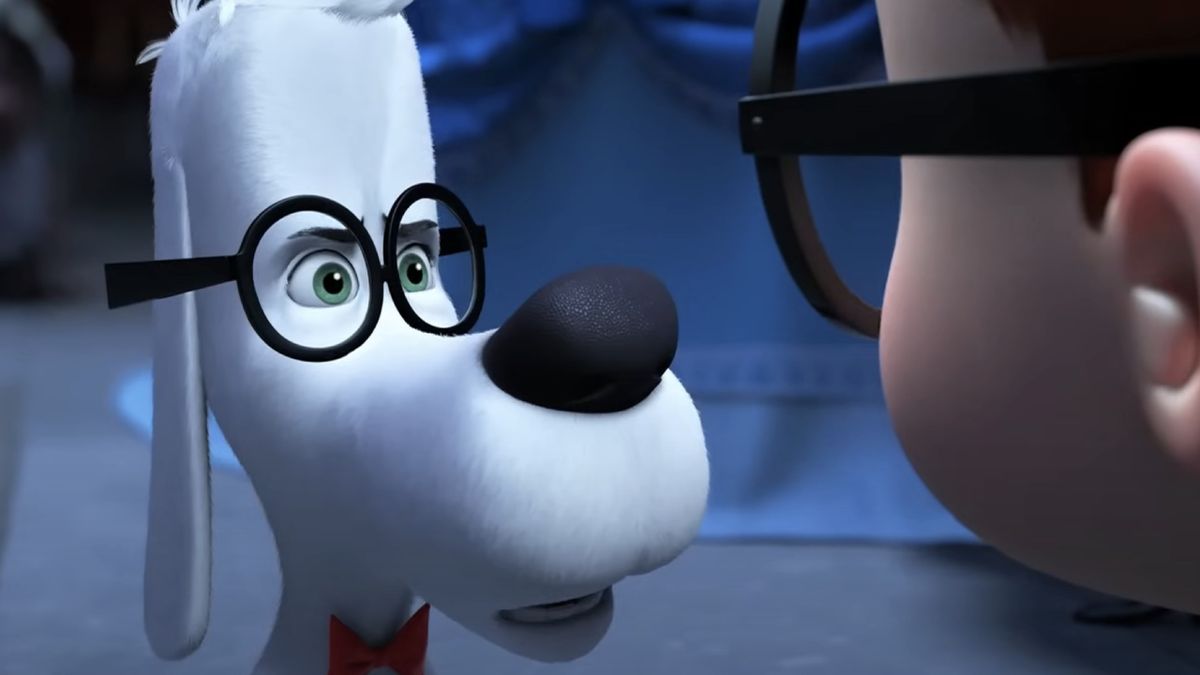
Mr. Peabody & Sherman (2014)
Based on special segments from the original animated series, The Adventures of Rocky and Bulwinkle and Friends, Mr. Peabody & Sherman sees the titular duo — a highly intelligent dog (voiced by Ty Burrell) and his adoptive human son (voiced by Max Charles) — accidentally cause a rip in the space-time continuum, which lands them in trouble. Luckily, George Washington and Abraham Lincoln agree to pardon Mr. Peabody, at which point — in the animated family film’s racist joke — Bill Clinton shows up to say, “I’ve done worse.”
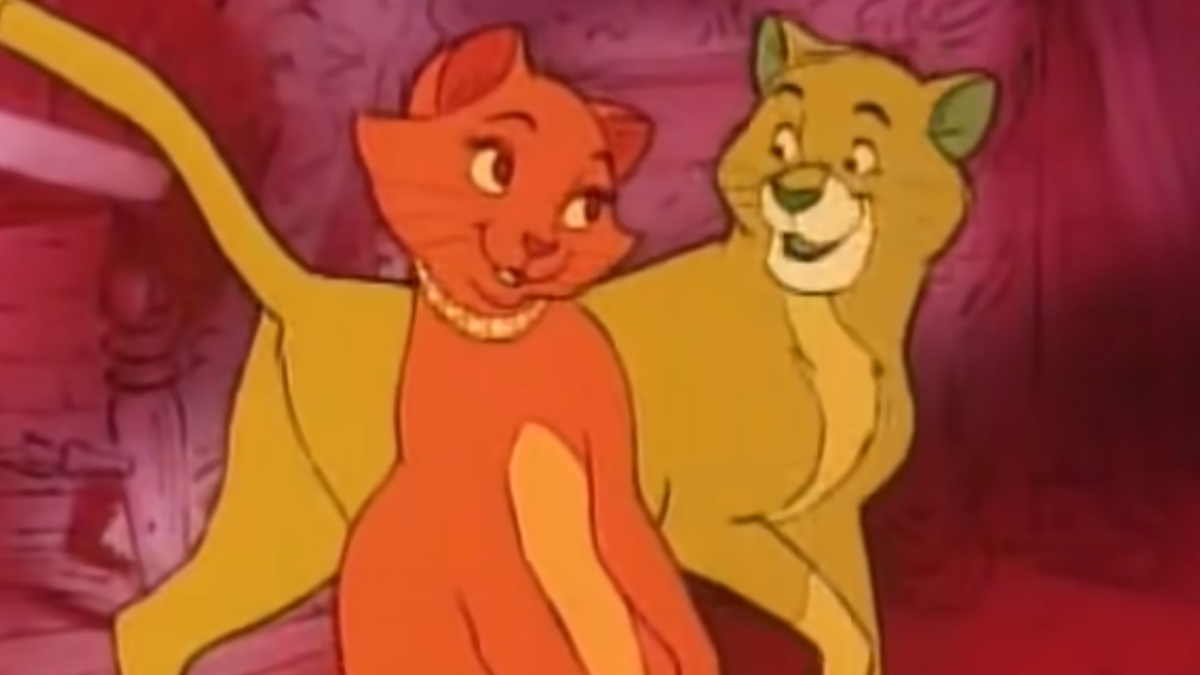
The Aristocats (1970)
When Disney+ started putting a content warning in front of older movies that contained insensitive or negatively stereotypical content, one such title was The Aristocrats. The animated film — which some still believe deserves a live-action remake — does, indeed, contain some insensitive racial stereotypes, as evident by how East Asian culture is depicted in “The Siamese Cat Song.”

Inside Out (2015)
There are many mature themes throughout Inside Out that are important for younger viewers to witness, but then there are some more humorous moments that likely go over their heads. For instance, when Fear wonders if Riley saw a bear and Disgust assures none in exist in San Francisco, Anger recalls seeing a hairy man who resembled a bear, in reference to a term from LGBTQ+ culture.
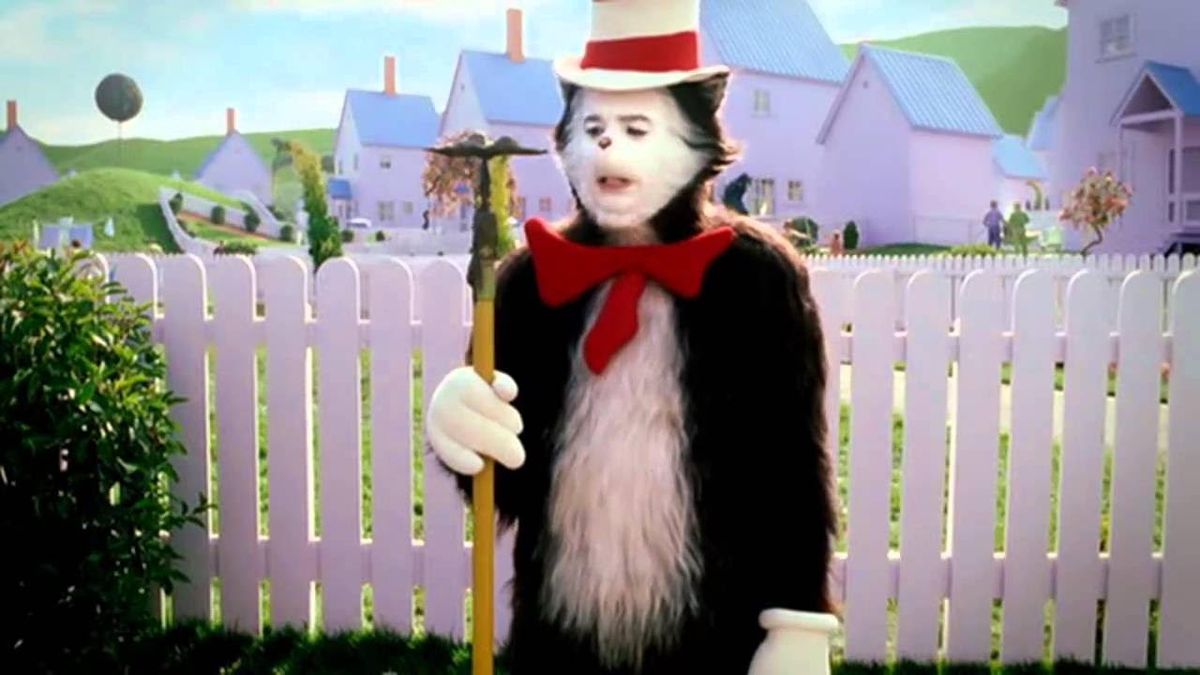
The Cat In The Hat (2003)
About 99.9 percent of the humor in star Mike Myers’ almost universally reviled adaptation of Dr. Seuss’ The Cat in the Hat — following two siblings’ (played by Spencer Breslin and Dakota Fanning) adventures with a giant feline — is of the crudest, most crass, and most inappropriate kind. We could fill this entire list with examples, but we’ll just settle for the moment when The Cat calls a gardening tool a “dirty hoe.”
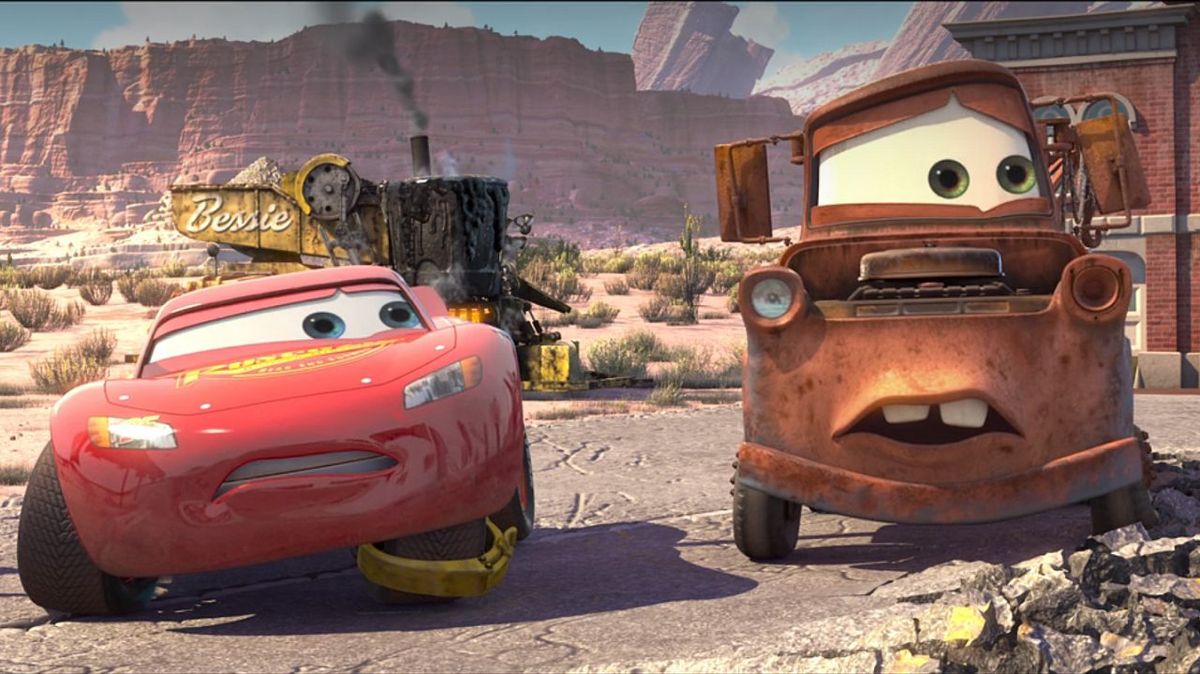
Cars (2006)
There are a quite a few overtly mature references in Pixar’s Cars, such as when Lightning McQueen (voiced by Owen Wilson) gets “flashed” by a couple of fans who put on their high beams. Or, what about when Lightning walks in on Doc Hudson’s (Paul Newman) surgery on the Sheriff or when he tells everyone Doc Hudson has three Piston Cups, to which Mater (Larry the Cable Guy) asks, “He did what in his cup?”
If you see no harm in showing these films to your children, we will not stop nor judge you. All we are asking is that you give it a little thought before you.
